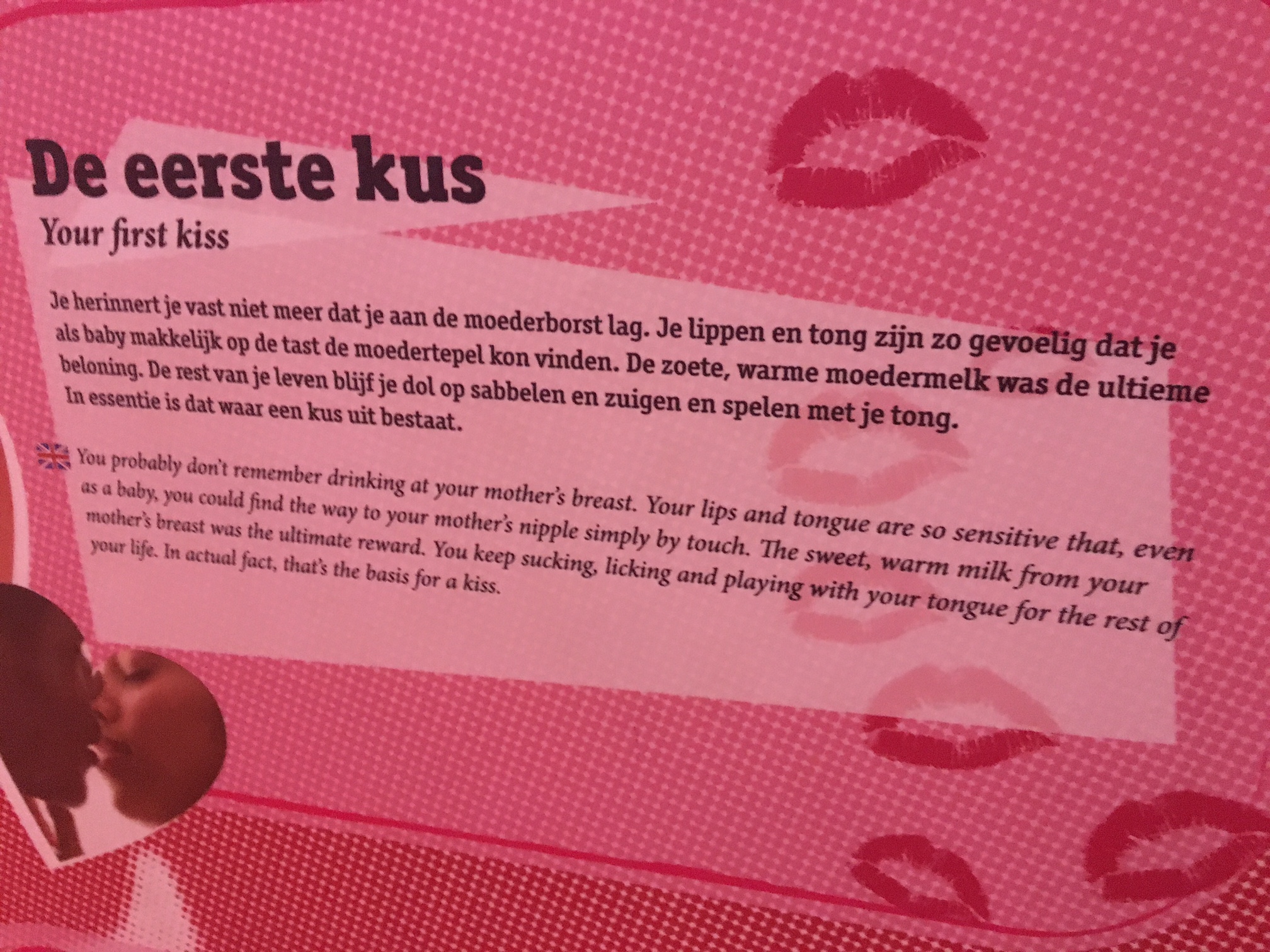I had my first boyfriend in seventh grade. It was new territory, not liking a boy but doing so openly, having him call my house, hold my hand in public, actually want to talk and hang out with me while we were navigating those early teenage changes, hormones and feelings.
I was terrified he would try to kiss me. Like, really kiss me. Because I had no idea how it was actually done.
That year I had a social studies teacher who used to open the floor during class sometimes to any questions anyone had about anything. They were anonymous: we could write down a concern or dilemma and he'd read them aloud and respond.
RELATED: How to Teach Your Kid About Sex as Soon as She Pops Out of You
To my relief, someone—not me—posed the question of how to kiss a girl. "Open your mouth," my teacher said, "and say al-fal-fa."
We laughed, but it wasn't terribly helpful.
This past winter break from school, I took my children—ages 4.5 and 6—to Amsterdam's science museum. It was your usual fare: Experiments with water, gravity, sound. And then we came to a section named Teen Facts, which was all about puberty. Having lived in the Netherlands the last few years, this was no surprise.
The Dutch, in general, have a relatively open view about sex and far less stigma or discomfort around talking about sex. Sex education can begin as early as preschool and focuses largely on teaching consent: Children learn to say no as well as yes.
I'm happy to have my children growing up with healthy messages about sex…
The exhibit included a peep show, which was intended for older children to learn more about sex, a subject the exhibit acknowledged had a lot to do with the "final step into adulthood." We skipped that, but what my children did enjoy was the First Kiss exhibit.
It was a glass box with two giant tongues inside. Children could control the tongues by reaching into either side of the box and inserting their arms into the puppet-like organs. An accompanying sign explained that "sucking, licking, and playing with your tongue" is the basis for a kiss, just as it is the means babies use to get milk when being breastfed.

There were even more instructions for those who wanted to try French kissing. The translation was perhaps a little off, but the instructions were as follows: 1. Put your hand in a tongue; 2. Be as creative as you like! 3. Make it a beautiful sight.
RELATED: Why You (Yes, You!) Will Never Sleep Through the Night Again
My kids loved this game and any other context was totally lost on them. And I'm not sure that seventh grade me would've gained a whole lot of insight from this particular exhibit. But I'm happy to have my children growing up with healthy messages about sex: That it's a natural thing and not embarrassing to discuss, that giving and receiving consent is paramount, and that it's important to protect yourself—and thankfully we live in a place where such protection is easily accessible and readily available.
For me, my first kiss—and the others to follow—were a matter of trial and error, but in the end it was nothing to be afraid of. It's many years away for my kids (I hope), and I'm sure they'll still have many of the same concerns I did when tackling their first kiss. But as long as the dialog is open, I hope they'll feel comfortable admitting so.




